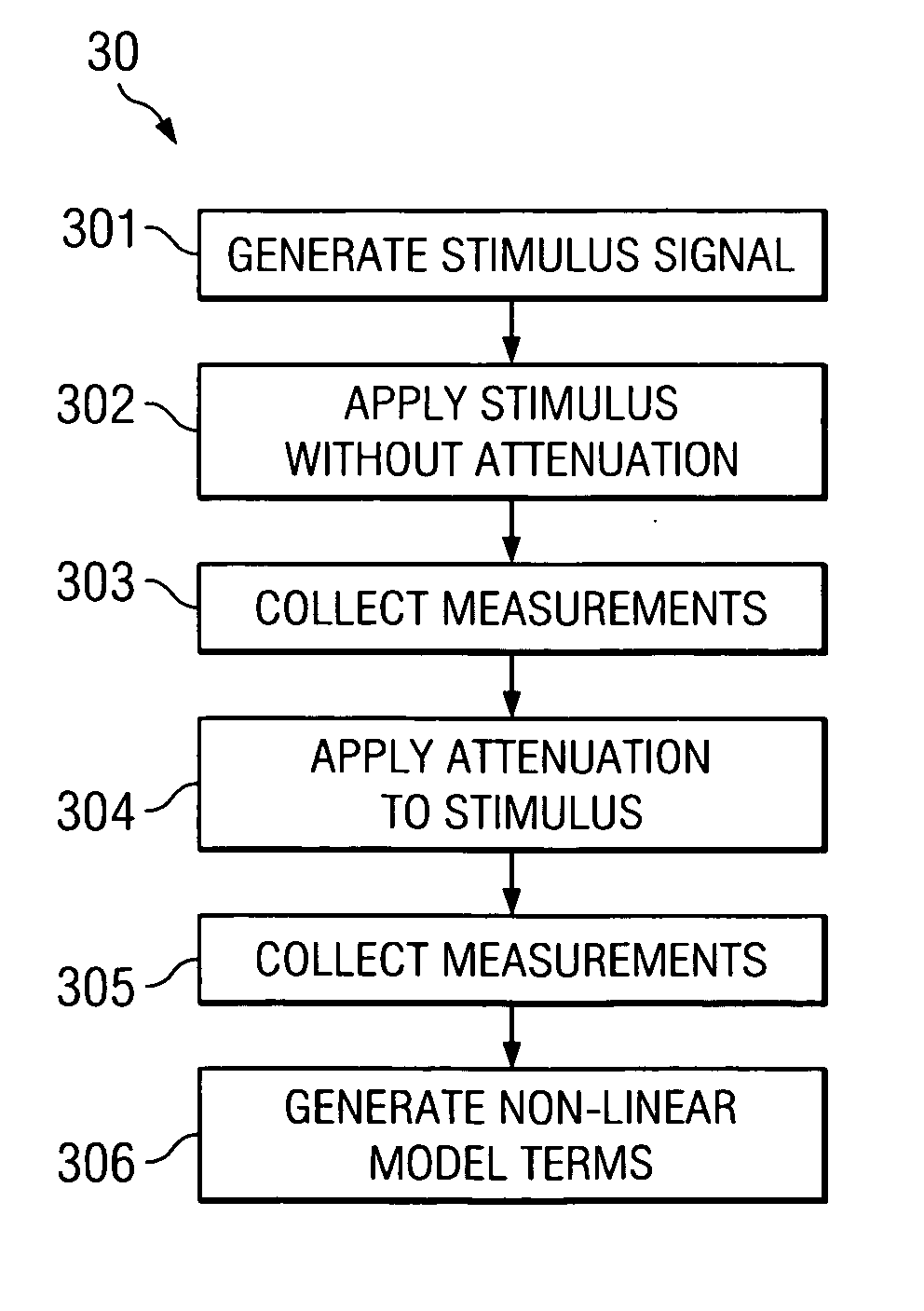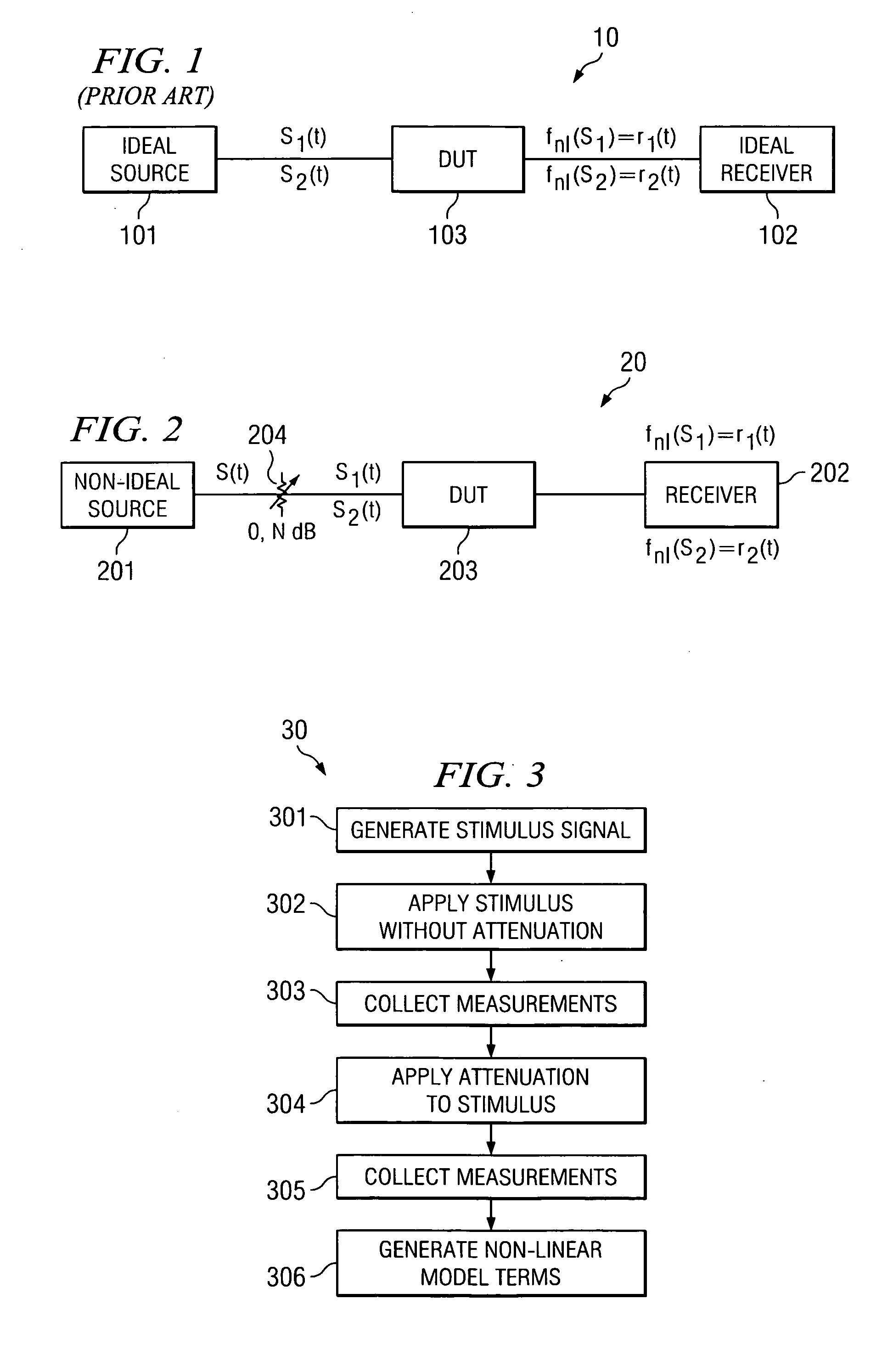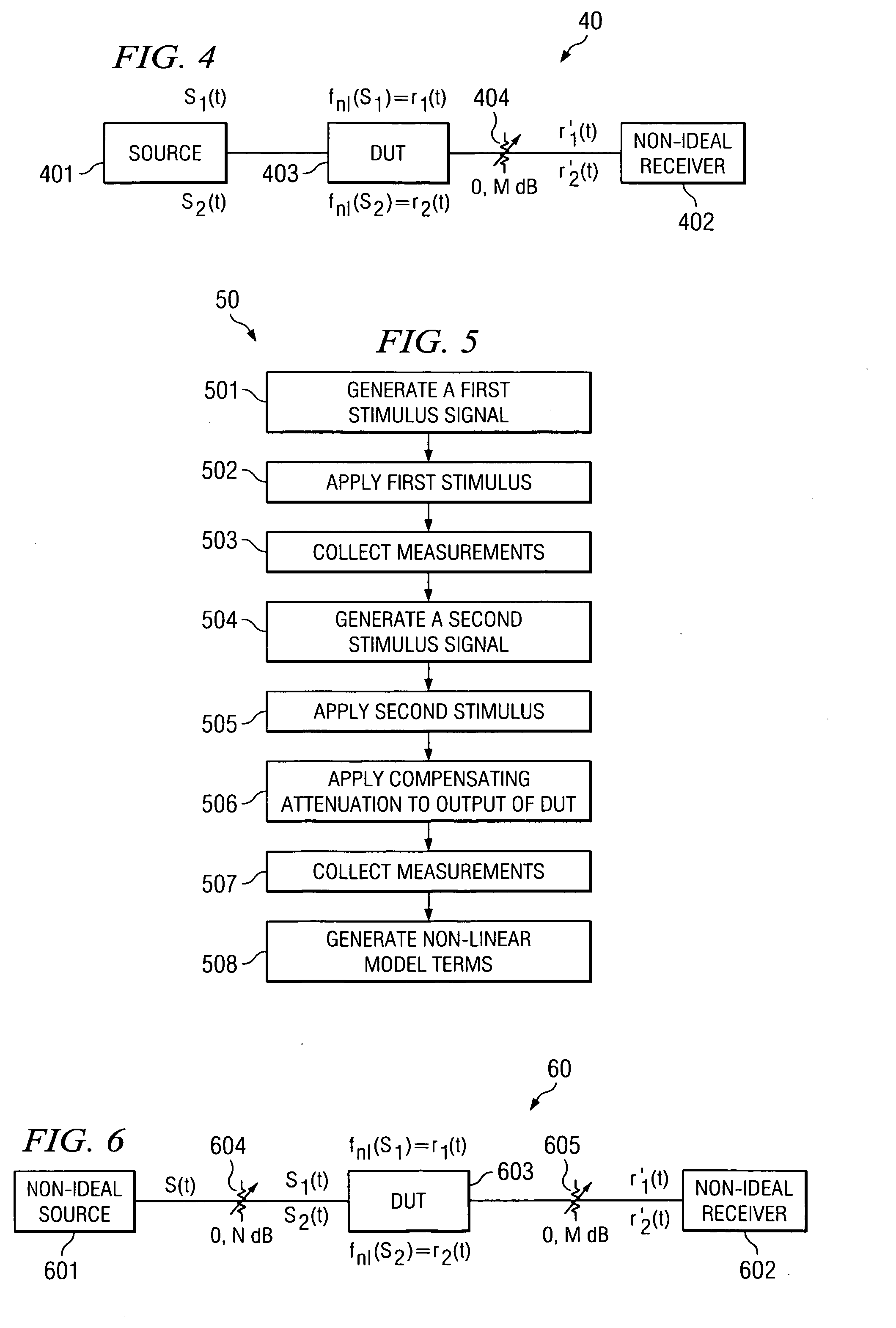Nonlinear model calibration using attenuated stimuli
a stimuli and nonlinear model technology, applied in the direction of speed/acceleration/shock measurement, measurement devices, instruments, etc., can solve the problems of coefficients of the model that may require re-adjustment, the accuracy of the system is often limited, and the dynamic range of signal generators and signal analyzers today is limited, so as to reduce the effect of nonlinearities in the receiver and recover the dynamic rang
- Summary
- Abstract
- Description
- Claims
- Application Information
AI Technical Summary
Benefits of technology
Problems solved by technology
Method used
Image
Examples
Embodiment Construction
[0023] It will be understood that the inventive concepts described herein may be adapted for use to calibrate nonlinear models using attenuation or linear combinations of stimuli and / or attenuation of responses from a device under test (DUT). What follows will be understood to be specific embodiments, and the present invention need not be limited to only the embodiments described.
[0024]FIG. 1 shows prior art calibration configuration 10. Ideal source 101 stimulates DUT 103, and ideal receiver 102 collects measurements. First, ideal source 101 generates stimulus s1(t) and DUT 103 outputs response r1(t). Next, ideal source 101 generates stimulus s2(t) and DUT 103 outputs response r2 (t). Although ideal source 101 and ideal receiver 102 may not be truly ideal, they are highly linear compared to DUT 103, so that any nonlinearities in the measurements of responses r1(t) and r2(t) are attributable to DUT 103. However, if DUT 103 is extremely linear, it may be difficult or impractical to ...
PUM
 Login to View More
Login to View More Abstract
Description
Claims
Application Information
 Login to View More
Login to View More - R&D
- Intellectual Property
- Life Sciences
- Materials
- Tech Scout
- Unparalleled Data Quality
- Higher Quality Content
- 60% Fewer Hallucinations
Browse by: Latest US Patents, China's latest patents, Technical Efficacy Thesaurus, Application Domain, Technology Topic, Popular Technical Reports.
© 2025 PatSnap. All rights reserved.Legal|Privacy policy|Modern Slavery Act Transparency Statement|Sitemap|About US| Contact US: help@patsnap.com



